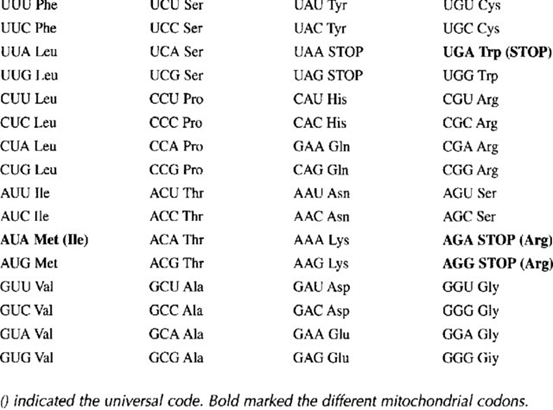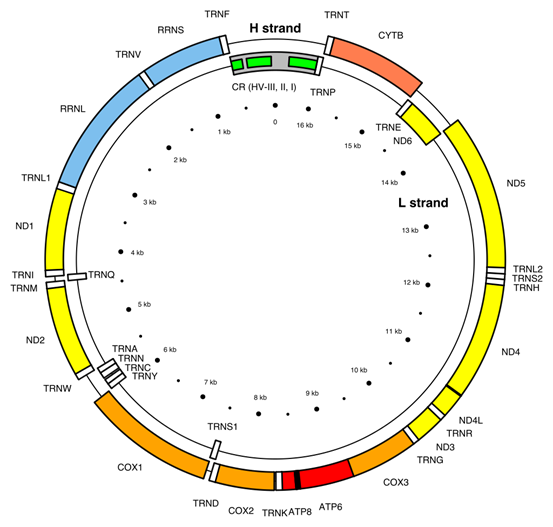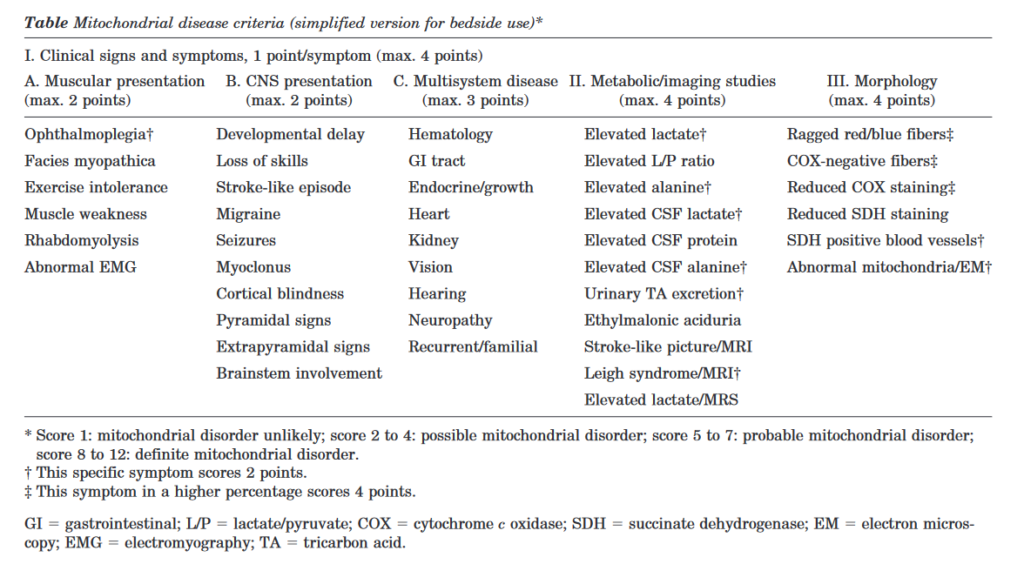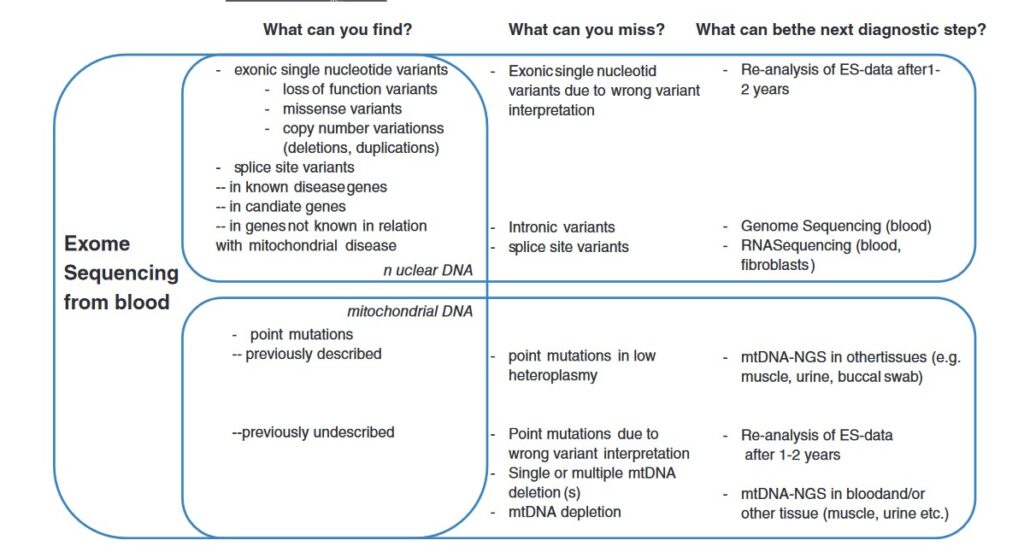Las enfermedades mitocondriales son un grupo de trastornos genéticos que afectan las mitocondrias, las estructuras celulares encargadas de producir energía en forma de ATP (adenosín trifosfato). Estas enfermedades son causadas por mutaciones en el ADN mitocondrial o en los genes nucleares que codifican proteínas relacionadas con la función mitocondrial. Debido a que las mitocondrias son cruciales para el metabolismo energético de las células, los trastornos mitocondriales pueden afectar múltiples sistemas del cuerpo, incluyendo el cerebro, el sistema nervioso, los músculos, el corazón y otros órganos.
Características o peculiaridades de las enfermedades mitocondriales.
Heteroplasmia. La heteroplasmia se refiere a la presencia de diferentes tipos de ADN mitocondrial en una célula o individuo. Las mitocondrias se multiplican dividiéndose de forma independiente al ciclo celular, y en el proceso de copiado pueden producirse errores que se van acumulando con el tiempo. Esta variación en el ADN mitocondrial se conoce como heteroplasmia.
Herencia mitocondrial. Las mitocondrias se heredan principalmente a través de la madre, y por lo tanto, el ADN mitocondrial (ADNmt) se hereda exclusivamente de la madre, a diferencia del ADN nuclear, que se hereda de ambos progenitores. Las mutaciones o variantes en el ADN mitocondrial se transmiten de madre a hijos, pero solo las hijas pueden transmitir estas mutaciones a sus descendientes. Los hijos varones no transmiten su ADN mitocondrial a su descendencia.
Código genético mitocondrial. El código genético mitocondrial es el conjunto de reglas que determina cómo la información contenida en el ADN mitocondrial (ADNmt) se traduce en proteínas dentro de las mitocondrias, y es similar pero no idéntico al código genético universal utilizado en el resto de la célula, que se encuentra en el ADN nuclear. En el código genético mitocondrial, algunas de las codificaciones de aminoácidos son diferentes, lo que significa que ciertos codones en el ARNm se traducen en aminoácidos diferentes en comparación con el código genético nuclear. Algunas de las diferencias más notables en el código genético mitocondrial son:
El codón AGA en el código nuclear codifica para el aminoácido arginina, mientras que en el código mitocondrial codifica para la serina.
El codón AGG en el código nuclear codifica para el aminoácido arginina, mientras que en el código mitocondrial también codifica para la serina.
El codón UGA en el código nuclear suele ser un codón de parada (codón de terminación), pero en el código mitocondrial codifica para el aminoácido triptófano.
Cromosoma mitocondrial. El término “cromosoma mitocondrial” se refiere al material genético contenido en las mitocondrias, pero es importante destacar que las mitocondrias no tienen estructuras cromosómicas similares a los cromosomas del núcleo. Aquí hay algunas características clave del ADN mitocondrial:
Forma y Estructura: El ADN mitocondrial suele presentarse en forma de un círculo cerrado, en contraste con los cromosomas lineales en el núcleo. Genes: El ADN mitocondrial contiene un total de 37 genes. Transcripción y Traducción: Las mitocondrias son capaces de transcribir y traducir su propio ADN, lo que les permite sintetizar las proteínas necesarias para su función. Sin embargo, la mayoría de las proteínas requeridas para la función mitocondrial son codificadas por el núcleo y luego importadas a las mitocondrias.
Genes codificados en el ADNmt
The 37 genes of the Cambridge Reference Sequence for human mitochondrial DNA and their locations[30]
Gene Type Product Positions in the mitogenome Strand MT-ATP8 protein coding ATP synthase , Fo subunit 8 (complex V)08,366–08,572 (overlap with MT-ATP6) H MT-ATP6 protein coding ATP synthase , Fo subunit 6 (complex V)08,527–09,207 (overlap with MT-ATP8) H MT-CO1 protein coding Cytochrome c oxidase , subunit 1 (complex IV)05,904–07,445 H MT-CO2 protein coding Cytochrome c oxidase , subunit 2 (complex IV)07,586–08,269 H MT-CO3 protein coding Cytochrome c oxidase , subunit 3 (complex IV)09,207–09,990 H MT-CYB protein coding Cytochrome b (complex III)14,747–15,887 H MT-ND1 protein coding NADH dehydrogenase , subunit 1 (complex I)03,307–04,262 H MT-ND2 protein coding NADH dehydrogenase , subunit 2 (complex I)04,470–05,511 H MT-ND3 protein coding NADH dehydrogenase , subunit 3 (complex I)10,059–10,404 H MT-ND4L protein coding NADH dehydrogenase , subunit 4L (complex I)10,470–10,766 (overlap with MT-ND4) H MT-ND4 protein coding NADH dehydrogenase , subunit 4 (complex I)10,760–12,137 (overlap with MT-ND4L) H MT-ND5 protein coding NADH dehydrogenase , subunit 5 (complex I)12,337–14,148 H MT-ND6 protein coding NADH dehydrogenase , subunit 6 (complex I)14,149–14,673 L MT-RNR2 protein coding Humanin — — MT-TA transfer RNA tRNA-Alanine (Ala or A) 05,587–05,655 L MT-TR transfer RNA tRNA-Arginine (Arg or R) 10,405–10,469 H MT-TN transfer RNA tRNA-Asparagine (Asn or N) 05,657–05,729 L MT-TD transfer RNA tRNA-Aspartic acid (Asp or D) 07,518–07,585 H MT-TC transfer RNA tRNA-Cysteine (Cys or C) 05,761–05,826 L MT-TE transfer RNA tRNA-Glutamic acid (Glu or E) 14,674–14,742 L MT-TQ transfer RNA tRNA-Glutamine (Gln or Q) 04,329–04,400 L MT-TG transfer RNA tRNA-Glycine (Gly or G) 09,991–10,058 H MT-TH transfer RNA tRNA-Histidine (His or H) 12,138–12,206 H MT-TI transfer RNA tRNA-Isoleucine (Ile or I) 04,263–04,331 H MT-TL1 transfer RNA tRNA-Leucine (Leu-UUR or L) 03,230–03,304 H MT-TL2 transfer RNA tRNA-Leucine (Leu-CUN or L) 12,266–12,336 H MT-TK transfer RNA tRNA-Lysine (Lys or K) 08,295–08,364 H MT-TM transfer RNA tRNA-Methionine (Met or M) 04,402–04,469 H MT-TF transfer RNA tRNA-Phenylalanine (Phe or F) 00,577–00,647 H MT-TP transfer RNA tRNA-Proline (Pro or P) 15,956–16,023 L MT-TS1 transfer RNA tRNA-Serine (Ser-UCN or S) 07,446–07,514 L MT-TS2 transfer RNA tRNA-Serine (Ser-AGY or S) 12,207–12,265 H MT-TT transfer RNA tRNA-Threonine (Thr or T) 15,888–15,953 H MT-TW transfer RNA tRNA-Tryptophan (Trp or W) 05,512–05,579 H MT-TY transfer RNA tRNA-Tyrosine (Tyr or Y) 05,826–05,891 L MT-TV transfer RNA tRNA-Valine (Val or V) 01,602–01,670 H MT-RNR1 ribosomal RNA Small subunit : SSU (12S) 00,648–01,601 H MT-RNR2 ribosomal RNA Large subunit : LSU (16S) 01,671–03,229 H
Criterios diagnósticos de enfermedad mitocondrial. Cuando sospechar la presencia de una enfermedad mitocondrial.
Cuando solicitar estudio de enfermedades mitocodriales si se ha realizado secuenciación NGS. Que te puedes perder si has realizado una secuenciación NGS y buscas una enfermedad mitocondrial.
{332710:BD8ICUPB};{332710:JZJ6PPCJ}
vancouver
asc
0
6436
%7B%22status%22%3A%22success%22%2C%22updateneeded%22%3Afalse%2C%22instance%22%3A%22zotpress-ed026e1bf7c2894583c02f41a1efaaff%22%2C%22meta%22%3A%7B%22request_last%22%3A0%2C%22request_next%22%3A0%2C%22used_cache%22%3Atrue%7D%2C%22data%22%3A%5B%7B%22key%22%3A%22JZJ6PPCJ%22%2C%22library%22%3A%7B%22id%22%3A332710%7D%2C%22meta%22%3A%7B%22creatorSummary%22%3A%22Wagner%20et%20al.%22%2C%22parsedDate%22%3A%222019%22%2C%22numChildren%22%3A2%7D%2C%22bib%22%3A%22%3Cdiv%20class%3D%5C%22csl-bib-body%5C%22%20style%3D%5C%22line-height%3A%201.35%3B%20%5C%22%3E%5Cn%20%20%3Cdiv%20class%3D%5C%22csl-entry%5C%22%20style%3D%5C%22clear%3A%20left%3B%20%5C%22%3E%5Cn%20%20%20%20%3Cdiv%20class%3D%5C%22csl-left-margin%5C%22%20style%3D%5C%22float%3A%20left%3B%20padding-right%3A%200.5em%3B%20text-align%3A%20right%3B%20width%3A%201em%3B%5C%22%3E1.%3C%5C%2Fdiv%3E%3Cdiv%20class%3D%5C%22csl-right-inline%5C%22%20style%3D%5C%22margin%3A%200%20.4em%200%201.5em%3B%5C%22%3EWagner%20M%2C%20Berutti%20R%2C%20Lorenz%26%23x2010%3BDepiereux%20B%2C%20Graf%20E%2C%20Eckstein%20G%2C%20Mayr%20JA%2C%20et%20al.%20Mitochondrial%20DNA%20mutation%20analysis%20from%20exome%20sequencing%26%23x2014%3BA%20more%20holistic%20approach%20in%20diagnostics%20of%20suspected%20mitochondrial%20disease.%20Journal%20of%20Inherited%20Metabolic%20Disease%20%5BInternet%5D.%202019%20%5Bcited%202021%20Apr%208%5D%3B42%285%29%3A909%26%23x2013%3B17.%20Available%20from%3A%20%3Ca%20href%3D%27https%3A%5C%2F%5C%2Fonlinelibrary.wiley.com%5C%2Fdoi%5C%2Fabs%5C%2F10.1002%5C%2Fjimd.12109%27%3Ehttps%3A%5C%2F%5C%2Fonlinelibrary.wiley.com%5C%2Fdoi%5C%2Fabs%5C%2F10.1002%5C%2Fjimd.12109%3C%5C%2Fa%3E%3C%5C%2Fdiv%3E%5Cn%20%20%3C%5C%2Fdiv%3E%5Cn%3C%5C%2Fdiv%3E%22%2C%22data%22%3A%7B%22itemType%22%3A%22journalArticle%22%2C%22title%22%3A%22Mitochondrial%20DNA%20mutation%20analysis%20from%20exome%20sequencing%5Cu2014A%20more%20holistic%20approach%20in%20diagnostics%20of%20suspected%20mitochondrial%20disease%22%2C%22creators%22%3A%5B%7B%22creatorType%22%3A%22author%22%2C%22firstName%22%3A%22Matias%22%2C%22lastName%22%3A%22Wagner%22%7D%2C%7B%22creatorType%22%3A%22author%22%2C%22firstName%22%3A%22Riccardo%22%2C%22lastName%22%3A%22Berutti%22%7D%2C%7B%22creatorType%22%3A%22author%22%2C%22firstName%22%3A%22Bettina%22%2C%22lastName%22%3A%22Lorenz%5Cu2010Depiereux%22%7D%2C%7B%22creatorType%22%3A%22author%22%2C%22firstName%22%3A%22Elisabeth%22%2C%22lastName%22%3A%22Graf%22%7D%2C%7B%22creatorType%22%3A%22author%22%2C%22firstName%22%3A%22Gertrud%22%2C%22lastName%22%3A%22Eckstein%22%7D%2C%7B%22creatorType%22%3A%22author%22%2C%22firstName%22%3A%22Johannes%20A.%22%2C%22lastName%22%3A%22Mayr%22%7D%2C%7B%22creatorType%22%3A%22author%22%2C%22firstName%22%3A%22Thomas%22%2C%22lastName%22%3A%22Meitinger%22%7D%2C%7B%22creatorType%22%3A%22author%22%2C%22firstName%22%3A%22Uwe%22%2C%22lastName%22%3A%22Ahting%22%7D%2C%7B%22creatorType%22%3A%22author%22%2C%22firstName%22%3A%22Holger%22%2C%22lastName%22%3A%22Prokisch%22%7D%2C%7B%22creatorType%22%3A%22author%22%2C%22firstName%22%3A%22Tim%20M.%22%2C%22lastName%22%3A%22Strom%22%7D%2C%7B%22creatorType%22%3A%22author%22%2C%22firstName%22%3A%22Saskia%20B.%22%2C%22lastName%22%3A%22Wortmann%22%7D%5D%2C%22abstractNote%22%3A%22Diagnostics%20for%20suspected%20mitochondrial%20disease%20%28MD%29%20can%20be%20challenging%20and%20necessitate%20invasive%20procedures%20like%20muscle%20biopsy.%20This%20is%20due%20to%20the%20extremely%20broad%20genetic%20and%20phenotypic%20spectrum%2C%20disease%20genes%20on%20both%20nuclear%20and%20mitochondrial%20DNA%20%28mtDNA%29%2C%20and%20the%20tissue%20specificity%20of%20mtDNA%20variants.%20Exome%20sequencing%20%28ES%29%20has%20revolutionized%20the%20diagnostics%20for%20MD.%20However%2C%20the%20nuclear%20and%20mtDNA%20are%20investigated%20with%20separate%20tests%2C%20increasing%20costs%20and%20duration%20of%20diagnostics.%20The%20full%20potential%20of%20ES%20is%20often%20not%20exploited%20as%20the%20additional%20analysis%20of%20%5Cu201coff-target%20reads%5Cu201d%20deriving%20from%20the%20mtDNA%20can%20be%20used%20to%20analyze%20both%20genomes.%20We%20performed%20mtDNA%20analysis%20by%20ES%20of%202111%20cases%20in%20a%20clinical%20setting.%20We%20further%20assessed%20the%20recall%20rate%20and%20precision%20as%20well%20as%20the%20estimation%20of%20heteroplasmy%20by%20ES%20data%20by%20comparison%20with%20targeted%20mtDNA%20next%20generation%20sequencing%20in%2049%20cases.%20ES%20identified%20known%20pathogenic%20mtDNA%20point%20mutations%20in%2038%20individuals%2C%20increasing%20the%20diagnostic%20yield%20by%20nearly%202%25.%20Analysis%20of%20mtDNA%20variants%20by%20ES%20had%20a%20high%20recall%20rate%20%2896.2%20%5Cu00b1%205.6%25%29%20and%20an%20excellent%20precision%20%2899.5%20%5Cu00b1%202.2%25%29%20when%20compared%20to%20the%20gold%20standard%20of%20targeted%20mtDNA%20next%20generation%20sequencing.%20ES%20estimated%20heteroplasmy%20levels%20with%20an%20average%20difference%20of%206.6%20%5Cu00b1%203.8%25%2C%20sufficient%20for%20clinical%20decision%20making.%20Taken%20together%2C%20the%20mtDNA%20analysis%20from%20ES%20is%20of%20sufficient%20quality%20for%20clinical%20diagnostics.%20We%20therefore%20propose%20ES%2C%20investigating%20both%20nuclear%20and%20mtDNA%2C%20as%20first%20line%20test%20in%20individuals%20with%20suspected%20MD.%20One%20should%20be%20aware%2C%20that%20a%20negative%20result%20does%20not%20exclude%20MD%20and%20necessitates%20further%20test%20%28in%20additional%20tissues%29.%22%2C%22date%22%3A%222019%22%2C%22language%22%3A%22en%22%2C%22DOI%22%3A%22https%3A%5C%2F%5C%2Fdoi.org%5C%2F10.1002%5C%2Fjimd.12109%22%2C%22ISSN%22%3A%221573-2665%22%2C%22url%22%3A%22https%3A%5C%2F%5C%2Fonlinelibrary.wiley.com%5C%2Fdoi%5C%2Fabs%5C%2F10.1002%5C%2Fjimd.12109%22%2C%22collections%22%3A%5B%22EZ6F5J8B%22%5D%2C%22dateModified%22%3A%222021-04-08T10%3A19%3A00Z%22%7D%7D%2C%7B%22key%22%3A%22BD8ICUPB%22%2C%22library%22%3A%7B%22id%22%3A332710%7D%2C%22meta%22%3A%7B%22creatorSummary%22%3A%22Morava%20et%20al.%22%2C%22parsedDate%22%3A%222006-11-28%22%2C%22numChildren%22%3A2%7D%2C%22bib%22%3A%22%3Cdiv%20class%3D%5C%22csl-bib-body%5C%22%20style%3D%5C%22line-height%3A%201.35%3B%20%5C%22%3E%5Cn%20%20%3Cdiv%20class%3D%5C%22csl-entry%5C%22%20style%3D%5C%22clear%3A%20left%3B%20%5C%22%3E%5Cn%20%20%20%20%3Cdiv%20class%3D%5C%22csl-left-margin%5C%22%20style%3D%5C%22float%3A%20left%3B%20padding-right%3A%200.5em%3B%20text-align%3A%20right%3B%20width%3A%201em%3B%5C%22%3E1.%3C%5C%2Fdiv%3E%3Cdiv%20class%3D%5C%22csl-right-inline%5C%22%20style%3D%5C%22margin%3A%200%20.4em%200%201.5em%3B%5C%22%3EMorava%20E%2C%20van%20den%20Heuvel%20L%2C%20Hol%20F%2C%20de%20Vries%20MC%2C%20Hogeveen%20M%2C%20Rodenburg%20RJ%2C%20et%20al.%20Mitochondrial%20disease%20criteria%3A%20diagnostic%20applications%20in%20children.%20Neurology.%202006%20Nov%2028%3B67%2810%29%3A1823%26%23x2013%3B6.%3C%5C%2Fdiv%3E%5Cn%20%20%20%3C%5C%2Fdiv%3E%5Cn%3C%5C%2Fdiv%3E%22%2C%22data%22%3A%7B%22itemType%22%3A%22journalArticle%22%2C%22title%22%3A%22Mitochondrial%20disease%20criteria%3A%20diagnostic%20applications%20in%20children%22%2C%22creators%22%3A%5B%7B%22creatorType%22%3A%22author%22%2C%22firstName%22%3A%22E.%22%2C%22lastName%22%3A%22Morava%22%7D%2C%7B%22creatorType%22%3A%22author%22%2C%22firstName%22%3A%22L.%22%2C%22lastName%22%3A%22van%20den%20Heuvel%22%7D%2C%7B%22creatorType%22%3A%22author%22%2C%22firstName%22%3A%22F.%22%2C%22lastName%22%3A%22Hol%22%7D%2C%7B%22creatorType%22%3A%22author%22%2C%22firstName%22%3A%22M.%20C.%22%2C%22lastName%22%3A%22de%20Vries%22%7D%2C%7B%22creatorType%22%3A%22author%22%2C%22firstName%22%3A%22M.%22%2C%22lastName%22%3A%22Hogeveen%22%7D%2C%7B%22creatorType%22%3A%22author%22%2C%22firstName%22%3A%22R.%20J.%22%2C%22lastName%22%3A%22Rodenburg%22%7D%2C%7B%22creatorType%22%3A%22author%22%2C%22firstName%22%3A%22J.%20a.%20M.%22%2C%22lastName%22%3A%22Smeitink%22%7D%5D%2C%22abstractNote%22%3A%22BACKGROUND%3A%20Based%20on%20a%20previous%20prospective%20clinical%20and%20biochemical%20study%2C%20a%20consensus%20mitochondrial%20disease%20scoring%20system%20was%20established%20to%20facilitate%20the%20diagnosis%20in%20patients%20with%20a%20suspected%20mitochondrial%20disorder.%5CnOBJECTIVE%3A%20To%20evaluate%20the%20specificity%20of%20the%20diagnostic%20system%2C%20we%20applied%20the%20mitochondrial%20disease%20score%20in%2061%20children%20with%20a%20multisystem%20disease%20and%20a%20suspected%20oxidative%20phosphorylation%20disorder%20who%20underwent%20a%20muscle%20biopsy%20and%20were%20consecutively%20diagnosed%20with%20a%20genetic%20mutation.%5CnMETHODS%3A%20We%20evaluated%20data%20of%2044%20children%20diagnosed%20with%20a%20disorder%20in%20oxidative%20phosphorylation%2C%20carrying%20a%20mutation%20in%20the%20mitochondrial%20or%20nuclear%20DNA.%20We%20compared%20them%20with%2017%20children%20who%2C%20based%20on%20the%20clinical%20and%20metabolic%20features%2C%20also%20had%20a%20muscle%20biopsy%20but%20were%20finally%20diagnosed%20with%20a%20nonmitochondrial%20multisystem%20disorder%20by%20further%20genetic%20analysis.%5CnRESULTS%3A%20All%20children%20with%20a%20genetically%20established%20diagnosis%20of%20a%20primary%20oxidative%20phosphorylation%20disorder%20had%20a%20mitochondrial%20disease%20score%20above%206%20%28probable%20mitochondrial%20disorder%29%2C%20and%2073%25%20of%20the%20children%20had%20a%20score%20above%208%20%28definite%20mitochondrial%20disorder%29%20at%20evaluation%20of%20the%20muscle%20biopsy.%20In%20the%20nonmitochondrial%20multisystem%20disorder%20group%2C%20the%20score%20was%20significantly%20lower%2C%20and%20no%20patients%20reached%20a%20score%20comparable%20with%20a%20definite%20respiratory%20chain%20disorder.%5CnCONCLUSIONS%3A%20The%20mitochondrial%20disease%20criteria%20system%20has%20a%20high%20specificity%20to%20distinguish%20between%20mitochondrial%20and%20other%20multisystem%20disorders.%20The%20method%20could%20also%20be%20applied%20in%20children%20with%20a%20suspected%20mitochondrial%20disorder%2C%20prior%20to%20performing%20a%20muscle%20biopsy.%22%2C%22date%22%3A%22Nov%2028%2C%202006%22%2C%22language%22%3A%22eng%22%2C%22DOI%22%3A%2210.1212%5C%2F01.wnl.0000244435.27645.54%22%2C%22ISSN%22%3A%221526-632X%22%2C%22url%22%3A%22%22%2C%22collections%22%3A%5B%22EZ6F5J8B%22%5D%2C%22dateModified%22%3A%222015-04-10T16%3A46%3A48Z%22%7D%7D%5D%7D
1.
Wagner M, Berutti R, Lorenz‐Depiereux B, Graf E, Eckstein G, Mayr JA, et al. Mitochondrial DNA mutation analysis from exome sequencing—A more holistic approach in diagnostics of suspected mitochondrial disease. Journal of Inherited Metabolic Disease [Internet]. 2019 [cited 2021 Apr 8];42(5):909–17. Available from:
https://onlinelibrary.wiley.com/doi/abs/10.1002/jimd.12109
1.
Morava E, van den Heuvel L, Hol F, de Vries MC, Hogeveen M, Rodenburg RJ, et al. Mitochondrial disease criteria: diagnostic applications in children. Neurology. 2006 Nov 28;67(10):1823–6.





